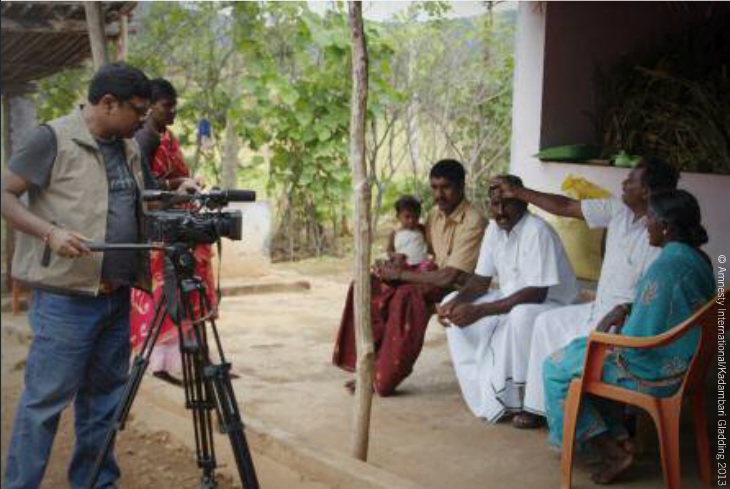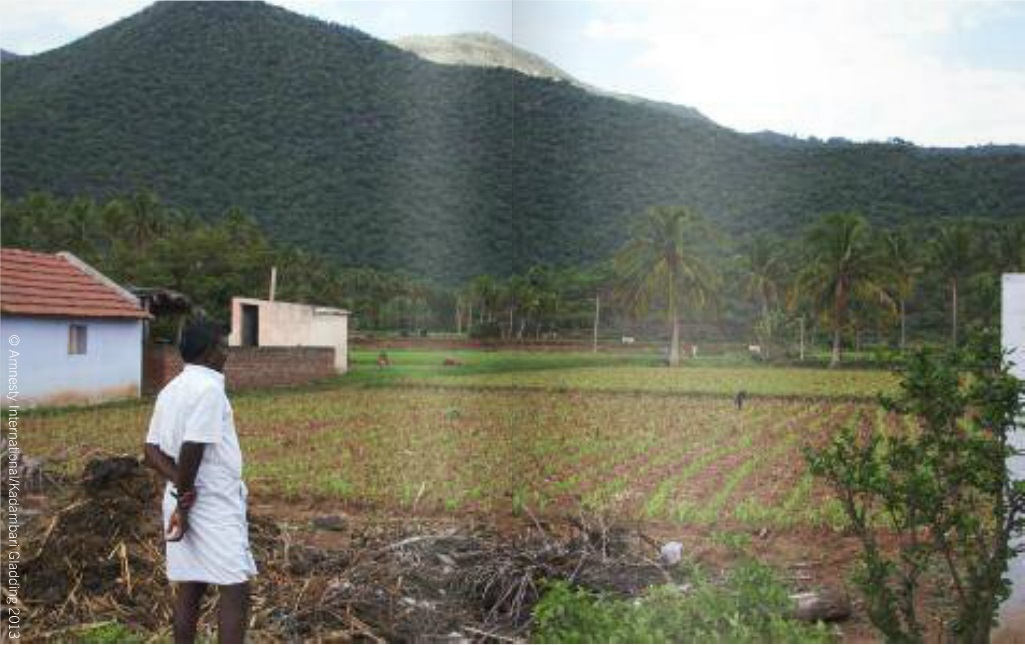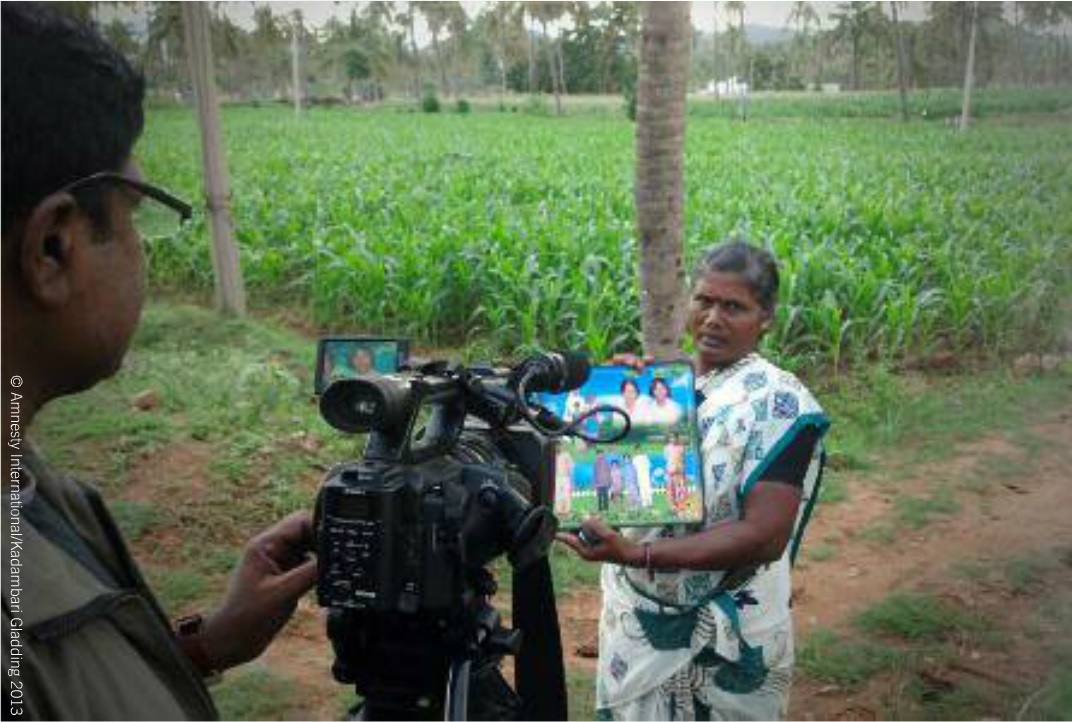
Amnesty staff in India speak to Gnanapragasam, one of the four men sentenced to death in 2002 in south India. All four had their sentences commuted to life on January 21, 2014 (Photo Credit: Amnesty International).
EDITOR’S NOTE: On Wednesday, Amnesty International will release its 2014 global Death Penalty report. Some believe that using the death penalty is fine as long as the public supports it. But history is littered with human rights violations that were supported by the majority, but were subsequently looked upon with horror, such as slavery, racial segregation and lynching. Here, independent filmmaker and Amnesty India Campaigner Kadambari Gladding, discusses turning the tide of public option in India, where public option increasingly favors the death penalty.
“A murder for murder cannot be justice,” Mani told me as we walked down the corridor of the school he went to with his friend Simon some four decades ago. Mani still lives in the same village, while Simon has been on death row for nearly 10 years. Mani is a quiet person, but some things – like the death penalty – move him to rare, long conversations.
When a person is hanged, while he may die in five minutes, his family continues to feel the pain of his death.
The men were convicted and sentenced to life in 2001 for their involvement in a landmine blast in 1993. It killed 22 people, including police personnel on their way to arrest the notorious sandalwood smuggler, Veerappan.
Unusually, their life sentences were raised to death sentences by the Supreme Court in 2004. The four have spent 20 years in jail, nearly 10 of those on death row. For the past few years, Mani has been campaigning alongside local churches to urge the Indian government not to execute Simon and the three others.

Mani at Simon’s sister’s farm in Karnataka. Like Gnanapragasam, Simon’s 2002 death sentence was commuted in January 2014 (Photo Credit: Amnesty International).
Closer to Home
I visited Mani’s villages in late 2013 to shoot video portraits for Amnesty India’s campaign against the death penalty. The four men have been in jail many years now, but they’re an indelible part of society here. Their sentences have brought the reality of the death penalty very close to home.
Amnesty India has been campaigning against the death penalty for years. Going against the tide of vocal support for this punishment from some quarters in the wake of widely covered incidents of violence against women, has been challenging.
Yet, 65,000 people in 2013 supported our call to end the death penalty. The fact that there was demonstrable support for abolition on the ground had never been established earlier in this way.
Having moved from Amnesty New Zealand to Amnesty India, I realized from the outset that this campaign would be contentious. Meeting activists who share my passion and beliefs inspires me every day. But until you interact with the human being behind these human rights campaigns, the penny doesn’t quite drop. The simple act of listening to a first-hand story of human rights abuse has power. It moves you to act.
We shot three short films about three families in Chamrajnagar, interviewing the sisters, mothers and children of the men on death row. There’s always respect and empathy for the feelings and rights of families of victims of crime. But when you hear from the prisoners’ families themselves, the futile nature of the death penalty becomes immediately clear.
“No one should be given the death sentence,” said Aruldas, Gnanapragasam’s son. “My father has been imprisoned for nearly 21 years. That in itself is as if he has died.”
Selvamary, Gnanapragasam’s wife, added: “Because we’re poor, we couldn’t afford expensive legal help. But for the poor, it’s the same life as it is for the rich. And to take that life is painfully cruel.”

Jayamary, Simon’s younger sister, holds a family photo from 30 years ago during the filming of a video by Amnesty International India (Photo Credit: Amnesty International).
Supreme Court Verdict
On the morning of January 21, 2014, we all waited at Amnesty’s offices in India and London for the Supreme Court verdict on the sentences of 15 prisoners, including the Marthalli four. With India resuming executions in 2012 – after eight years of effectively suspending them – the outlook was bleak.
But then, Simon, Bilavendran, Madaiah and Gnanapragasam all had their sentences commuted to life.
In this historic and momentous judgement, the Indian Supreme Court reaffirmed our faith in the Indian judiciary. The verdict rekindled hope that India is slowly moving towards complete abolishing the death penalty.
Although these commutations are a positive step, our struggle does not end here. Many are still on death row in India. Until the impetus of this recent verdict leads to a moratorium, and until the death penalty is abolished in India, our campaign continues.